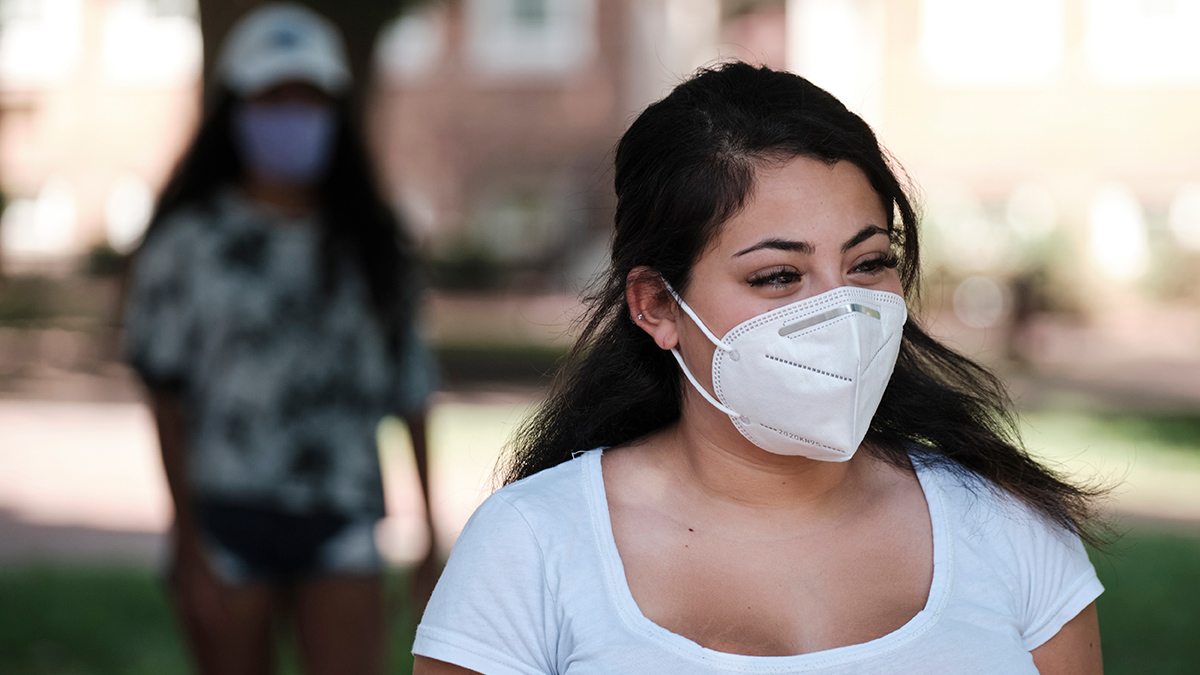Student survey examines public health attitudes
A recent survey showed that undergraduates are largely willing to wear masks while they’re on campus, but less likely to physical distance or avoid large gatherings.

The vast majority of Carolina undergraduates — 84% — are likely to wear face masks to class when they return to campus, according to a recent survey done by Gillings School of Global Public Health faculty and the Office of Institutional Research and Assessment.
“Overall, students are saying that they’ll be willing to do this,” said Audrey Pettifor, one of the epidemiologists involved in the survey.
More than 7,000 students completed the survey, which was emailed to 33,238 students on June 8 and closed June 23.
Of the respondents, 60% of undergraduates said they were “extremely likely” to wear masks to class, while another 24% said they were “somewhat likely.” Of graduate students, 79% said they were extremely likely to wear a mask to class and 13% were somewhat likely.
For graduate students, those numbers remained roughly the same (74% extremely likely, 16% somewhat likely) for wearing a mask on campus. For undergraduates, those extremely likely to wear masks on campus dropped to 52% and somewhat likely increased slightly to 26%.
Only 14% of students said they were uncomfortable wearing a mask, but many were concerned about forgetting (62%) or losing (44%) their mask.
In general, graduate students seem much more willing to abide by community standards to prevent the spread of COVID-19 compared to undergraduates. In the survey, 76% said they were extremely likely to adhere to physical distancing requirements on campus and 72% said they were extremely unlikely to go to parties or other large campus gatherings.
In contrast, only 52% of undergraduates said they were extremely likely to adhere to physical distancing requirements on campus and 28% said they are extremely or somewhat likely to go to parties or other large campus gatherings.
“This is where we’re seeing issues, when students aren’t on campus,” said Pettifor, suggesting that the University explore “harm-reduction approaches” that students can use in larger gatherings.
The survey also asked students about the precautions they are taking now. “People are comfortable getting together with friends they don’t live with, but they’re not OK with getting together with strangers,” Pettifor said. What’s not clear from the results, she added, is whether students will treat fellow students on campus as friends or strangers.
When asked what kind of classes they preferred, about a similar percentage of undergraduates (45%) and graduates (35%) preferred a return to campus with a hybrid mix of remote and in-person classes. But the most graduate students (46%) preferred online instruction only with no return to campus. Only 18% of undergraduates preferred staying at home.
The students’ top three concerns are the health of family and friends (76%), their own health (41%) and the impact on the overall economy (31%).
The release of this survey information comes three weeks after a faculty survey about returning to campus this fall was discussed at the June 19 Community Conversation for Faculty. In that survey, faculty expressed a variety of concerns about teaching on campus based on the current plan.




